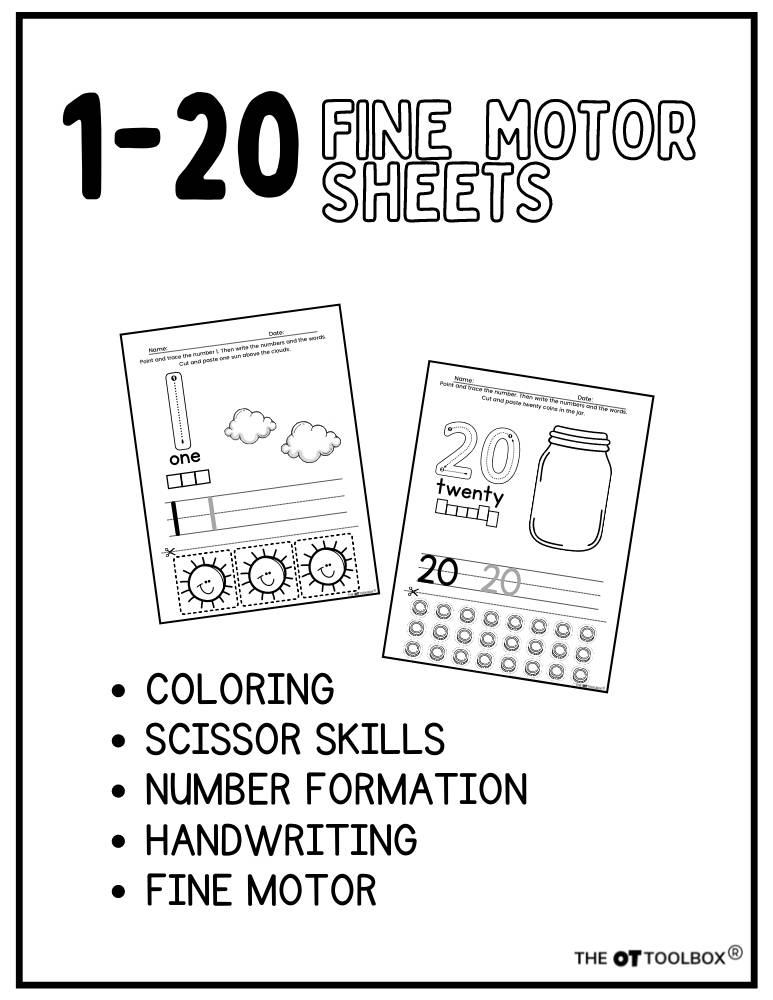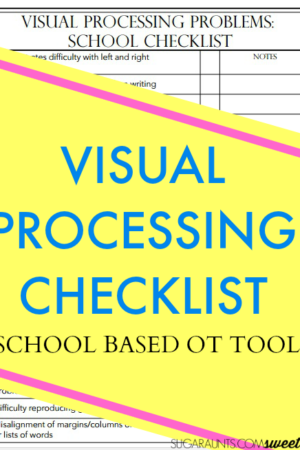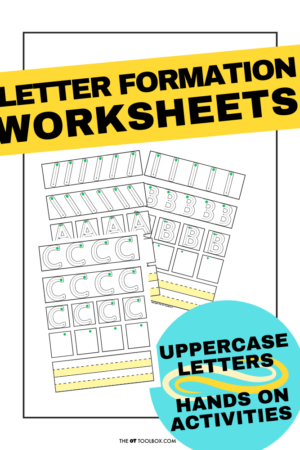1-20 Fine Motor Sheets
$6.00
Working on number formation is fun with this amazing packet of fine motor sheets to incorporate coloring, cutting, handwriting, math concepts, and pasting all in one page
It is no secret, children do not like to work hard. They do not want to struggle, complete repetitive tasks, or attend for more than ten minutes (if that). To combat this, The OT Toolbox has several resources that include several different skills and tasks wrapped up into one activity. These 1-20 Fine Motor Sheets are easy to download and print. Students will learn to count objects, copy and write numbers, cut shapes on a line, glue pieces with accuracy, color within the lines, along with mastering social and executive function skills.
This is a digital product.
Description
Forming a motor plan for number formation is easy with these hands-on, play-based fine motor sheets. Kids love the play-based nature of the sensory motor task. Due to the instantaneous gratification obtained from electronic devices, working hard on a worksheet becomes a non favored task. Electronic devices offer several chances to correct mistakes, easily erase errors, and start over. A work page is not the same. Even though these activities are not favored, writing and cutting will always be important.
1-20 Fine motor sheets, how to:
- Trace the number
- Write the number several times
- Color the pictures
- Cut the pictures on the lines
- Count the correct number of pictures to match the number
- Glue objects onto the correct location
A note about the tools you need:
Scissors:
- small toddler scissors are just right for tiny hands.
- Self opening or loop scissors are another way to make cutting easier for those learning to cut, or lack the intrinsic hand muscles to open and close scissors
- Did you know left handed people cut in a clockwise direction while their right handed friends cut counter-clockwise? This allows the helper hand to support the paper adequately while cutting
Paper:
- lightweight paper is much more difficult to stabilize than heavy weight construction or cardstock paper
- Colored paper may be easier or more difficult for children to work with because of color contrasts
- The page can be laminated first, using wipe off markers to color in the design. This is a great way to make this page reusable. Cutting the pieces before coloring it may be necessary. Although this takes away the cutting task, it may be a great adaptation for children who are not able to cut yet
Writing utensils:
- There are endless possibilities for coloring. Markers, crayons, colored pencils, paints, watercolor, chalk, or dry erase pens all provide different input, and require different levels of fine motor skill to manipulate
- Small one inch crayons are excellent for developing those tiny hand muscles
Ways to adapt and modify these 1-20 fine motor sheets:
- Laminate the page for reusability. This saves on resources, and many learners love to write with markers! Note: some children love to use wipe off sheets, while others become upset that they can not take their work with them (take photos for data collection)
- Make this part of a larger lesson plan including gross motor, sensory, social, executive function, or other fine motor skills
- Print on different types of paper
- Cut the shapes and make a matching game to add to the degree of difficulty
- Enlarging the font may be necessary to beginning handwriting students who need bigger space to write, or boxes for each individual number
- Project this page onto a smart board for students to come to the board and write in big letters
- More or less prompting may be needed to grade the activity to make it easier or harder
- Drippy wet glue is messy, and not as convenient as glue stick, however it is superior for different reasons. The added benefit is the sensory input from touching the wet glue, as well as fine motor strengthening from squeezing the bottle
- Add or eliminate steps such as cutting or coloring. Students can draw lines from one place to the next, trace numbers, and leave the page black and white
- Explore other ways to use this activity
- Velcro the back of the shapes, after laminating and cutting it, to create a matching game
- Have students write on a slant board, lying prone on the floor with the page in front to build shoulder stability, or supine with the page taped under the table
- Add glitter! Glitter makes everything wonderful
This is a digital file.
This resource is included inside our Level 2 Member’s Club. Members can access the resource in the Number Formation Therapy Theme.






